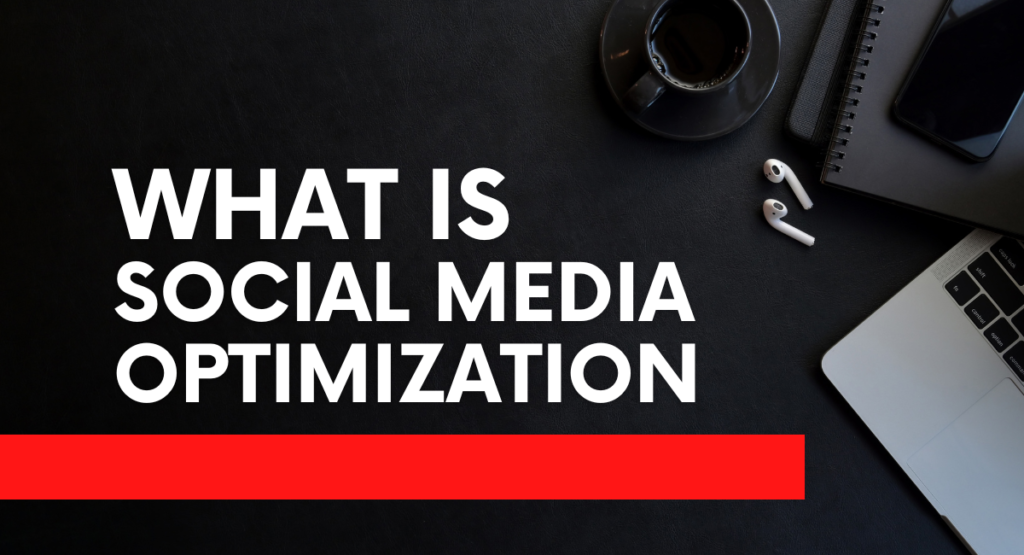Definition of Click-Through Rate (CTR)
In digital marketing, a click-through rate (CTR) is the percentage of users who click on an advertisement or link. It displays how well your advertisements or content entice viewers and spark discussion.
Importance of CTR in digital marketing and online advertising
CTR is important in digital marketing since it assesses how well advertisements and content engage viewers. Increased CTRs indicate that your target audience is responding to your messaging, which can lead to higher quality ratings, improved ad performance, and more efficient use of your marketing money.
Overview of how CTR is calculated
The CTR is computed by multiplying the number of impressions (or views) by the number of clicks on an advertisement or link, and then dividing the result by 100. An advertisement’s click-through rate (CTR) would be 5%, for example, if it was clicked five times per 100 impressions. This basic strategy assists marketers in determining the campaign’s success.
Understanding CTR
CTR Formula: (Number of Clicks / Number of Impressions) x 100
To calculate the Click-Through Rate (CTR), divide the total number of clicks on an advertisement or link by the total number of impressions (views) generated and multiply by 100. It provides a percentage of ad performance.
Explanation of key terms: clicks, impressions
The number of “clicks” a user makes on a specific link or advertisement is tracked. “Impressions” refer to how many times a person watches an advertisement or link. Understanding these signs is crucial for understanding involvement.
Examples of CTR calculations in different contexts
In Google Ads, if an ad receives 20 clicks out of 1,000 impressions, the click-through rate (CTR) is 2%. In an email campaign, a link that garnered 15 clicks out of 300 email opens would have a click-through rate (CTR) of 5%. These examples demonstrate how the CTR differs across platforms.
Significance of CTR in Digital Marketing
Role of CTR in measuring ad performance
CTR is an important metric of ad performance since it shows how relevant and engaging your ad content is to your target audience. A low CTR may indicate that you should optimise, whilst a high CTR indicates that your advertisement is being clicked.
How CTR impacts Quality Score in Google Ads
CTR has a direct impact on Quality Score, a parameter that determines ad relevancy and cost-per-click (CPC) in Google Ads. More CTR results in better ad positioning and cheaper ad spending, increasing the Quality Score.
CTR as a key metric in email marketing, social media campaigns, and SEO
Every digital marketing platform requires a high CTR rate. It demonstrates the effectiveness of your email marketing content and subject lines; it displays social media activity; and in SEO, it helps determine how well your listings promote clicks from search results.
Factors Influencing CTR
Ad Copy and Content: Importance of engaging and relevant content
Your ad copy needs to be engaging and relevant in order to pique readers’ interest and motivate clicks. Engaging content that resonates to your target audience increases the likelihood that they will click on your ads. Effectively crafted ad copy speaks to and meets consumer wants, increasing click-through rate (CTR).
Visuals and Design: Impact of images, videos, and overall design on CTR
The visual elements of CTR—which include photos, videos, and design—have a significant impact. Better and more visually appealing photos that are relevant to the content may attract more users and encourage them to click. The overall performance of a campaign can be enhanced by well-designed commercials that mix impactful graphics with effective layouts.
Targeting and Relevance: How audience targeting affects CTR
Increasing the CTR of your advertising means that the people who are most likely to interact with it will see it because of precise targeting of your audience. By customising your material to the interests or demographics of your target audience, you may increase the chance that consumers will click on your ads. Effective targeting takes into account the audience’s behaviours and preferences.
Call to Action (CTA): Crafting effective CTAs to boost CTR
A strong call to action (CTA) that points users in the direction of the necessary action is essential to increasing CTR. By encouraging more interaction, well-written calls to action (CTAs), such as “Shop Now” or “Learn More,” can increase user intent and click-through rates.
Optimizing CTR
A/B Testing: Importance of testing different ad variations
A/B testing is necessary for digital marketing optimisation. You may find out which version of your advertisement works best for your target demographic by experimenting with several ad versions, such as calls-to-action, headlines, and graphics. You may continuously raise your advertisements’ CTR and engagement by using this process.
Keyword Optimization: Choosing the right keywords for higher CTR
Selecting the right keywords is crucial to increasing CTR. You can ensure that the right individuals see your ads and that there are more qualifying clicks by concentrating on high-intent, relevant keywords. Keyword optimisation is the process of finding, analysing, and fine-tuning keyword choices to align with both your advertising goals and your target audience’s search behaviours.
Ad Placement and Timing: Strategic placement and timing for maximum impact
Ad placement and timing can significantly affect click-through rate (CTR). Increase visibility by scheduling your ads for times when your target audience is most likely to be online, and by placing them in conspicuous places. By understanding how your audience interacts, you can arrange your advertisements for maximum interaction at the right times and in the right places.
Landing Page Relevance: Ensuring consistency between ad content and landing page
Maintaining the relevancy of your landing page and ad content is necessary to increase CTR. When users click on an advertisement, they expect to see material that fulfils the promise. A well-designed landing page improves user experience, increases conversion rates, and strengthens the message.
Industry Benchmarks
Average CTRs across different industries and platforms
The CTR benchmarks across platforms and industries are very different. For example, average CTRs tend to be higher in e-commerce and tourism, but typically lower in industries like financial and legal services. In general, click-through rates (CTRs) from search engines like Google are higher than those from social networking sites like Facebook, where users actively look for specific products or information.
What constitutes a good CTR in various digital marketing channels
A “good” CTR varies depending on the platform and industry. A click-through rate (CTR) of more than 2% in Google Ads is considered strong for most industries; a CTR of 1% to 1.5% is often considered successful in social media ads. What makes a successful CTR will ultimately depend on the goals of your campaign, the actions of your competitors, and the behaviour of your audience.
Common Misconceptions About CTR
High CTR does not always mean high conversion
A high click-through rate (CTR) indicates that people are interested in your advertisement or content, but it does not guarantee conversions. Because customers may still choose not to finish the planned activity (such as registering or completing a purchase) even after clicking on the advertisement, it is crucial to assess the entire funnel.
Importance of considering other metrics along with CTR
Cost-per-click (CTR) is a significant indicator, but you should also take conversion rates, return on investment, and cost-per-conversion into account. These additional metrics provide a more comprehensive view of a campaign’s effectiveness, ensuring that high engagement yields noteworthy outcomes.
Misinterpreting CTR as the sole measure of success
Making decisions solely based on CTR can be misleading because a high CTR is not always a sign of a successful campaign. By neglecting to examine post-click behaviours such as sales or conversions, marketers run the danger of overlooking crucial information that could lead to inaccurate campaign performance ratings and misguided optimisation attempts.
Tools for Measuring and Analyzing CTR
Overview of tools like Google Analytics, Google Ads, Facebook Ads Manager, etc.
Digital marketing success can only be tracked with the use of tools like Facebook Ads Manager, Google Ads, and Analytics. Google Analytics monitors website traffic, user behaviour, and conversions; in contrast, Facebook Ads Manager and Google Ads provide marketers with comprehensive insights into ad effectiveness, including metrics like CTR, to help them manage their campaigns.
How to use these tools to track and improve CTR
Digital marketing success can only be tracked with the use of tools like Facebook Ads.
To track and improve CTR, use Google Analytics to evaluate landing page performance and identify drop-off points. Both Google Ads and Facebook Ads Manager allow you to track CTR for individual ads, ad groups, and campaigns. By detecting ineffective ads and improving keywords, targeting, and creatives, you can successfully raise CTR.
Conclusion
Since CTR tells you how well your content and ads engage your target audience, it’s critical for assessing the performance of your digital marketing campaigns. CTR is a crucial metric for online advertising campaigns because it aids companies in drawing in high-quality leads, boosting campaign effectiveness, and ultimately improving conversion rates. By consistently tracking and improving CTR, businesses may accomplish these objectives.
FAQ’s
How is CTR calculated?
Divide the total clicks by the total impressions to find the percentage of click-through rate (CTR), then multiply the result by 100.
Why is CTR important in digital marketing?
CTR is important because it measures how successfully an advertising or piece of content engages the audience, which has an impact on campaign performance and ad expenditures.
Does a high CTR always mean success?
Not every time. A campaign’s actual success depends on conversions and achieving its ultimate goals, like sales, even though a high CTR is preferred.
Is CTR relevant for email marketing?
Clickthrough rate (CTR) is a crucial metric in email marketing since it shows how well your email content persuades recipients to click on links and take action.







